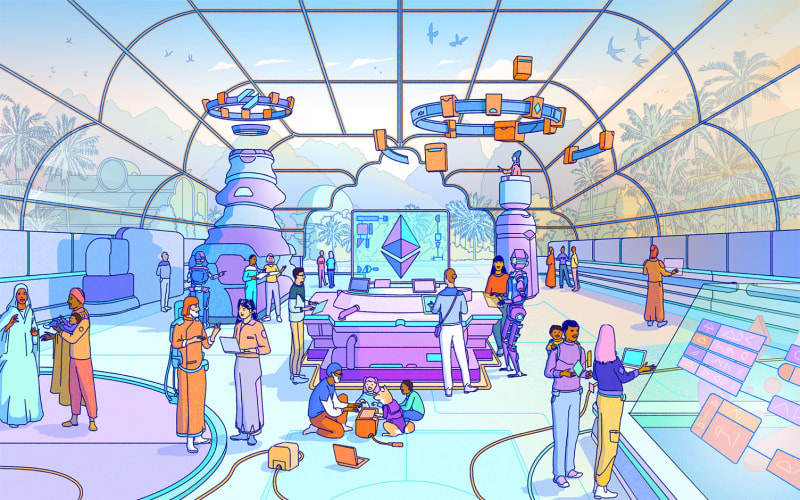Web 3.0, a new buzzword, has taken the world by storm. From developers to technical cofounders and VCs, all are glorifying it. Startups are recruiting Web 3.0 devs for higher compensation. More developers are entering into next generation of the Web and a great number of those have taken it as their first tech stack. All are over the moon.
The tech powering Web 3.0 including both Frontend and Backend is built on top of Web 2.0 stuff. Although one can learn Web 3.0 directly, it is important to mention that a solid foundation should be erected in Web 2.0 first.
What Web2.0 tech stack is used to build Web 3.0?
Frontend
HTML, CSS, JS, React, and Next.js are the main building blocks of the Frontend of NFT marketplaces, Dapps, etc. These technologies belong to the earlier versions and there exists no Web3.0 Frontend excluding them.
Consuming Blockchain and Smart Contracts
Ether.js and Web3.js connect customer-facing UI with smart contracts. Without an iota of JS knowledge, these two are out of the scope.
Building Smart Contracts
Solidity is the defacto programming language to create smart contracts. It’s a statically typed programming language following OOPs concepts. The same is true for Rust, which is also gaining momentum nowadays. Having experience with Java, TypeScript comes in handy here.
The above discussion illustrates that having a strong knowledge of Web 2.0 tech is a prerequisite for getting into the neo web. If a novice gets into using web3.js without knowing in and out of JS, the person is destined to stick to issues. Similarly, working with Solidity or other stuff to create smart contracts requires OOP and Static typing knowledge.
Now, the question arises as to how can someone aloof to programming can get into Web3.0. Below, I have shared a viable plan.
Roadmap for a novice to get into Web 3.0
1. Learning the basics of web development
Start learning with HTML, CSS, JavaScript, and OOP. Having a strong background in these will enable you to not only create beautiful Frontends but also work with smart contracts.
2. Getting hands dirty on Web 3.0 concepts
Smart contracts, blockchain, proofs-of-concept, Ethereum, tokens, and other foundational concepts should be mastered as well.
3. Build Frontends of dapps, marketplaces, and more.
React and Next.js are widely used technologies to develop modern and fast frontends. This is a lethal combination here as well. Learning this stack will also help build Web 2.0 web apps.
4. Working with web3.js and ether.js
web3.js is a collection of libraries that allow you to interact with a local or remote Ethereum node using HTTP, IPC, or WebSocket. Similarly, the ethers.js library aims to be a complete and compact library for interacting with the Ethereum Blockchain and its ecosystem.
5. Building Smart Contracts
Solidity, a high-level and object-oriented programming language inspired by C++, Python, and JavaScript, is widely used to create smart contracts. Having experience with statically typed programming languages is beneficial here.
6. Be familiar with the ecosystem
A Web3.0 developer should have first-hand experience with Remix IDE, Truffle, MetaMask, and the relevant ecosystem.
To summarise, it can be said that it is pertinent to first learn Web 2.0 and then move into Web 3.0. It will help to have first-hand experience of how web development actually works and what are the differences between these versions of the web.
Thanks for reading. Follow for more amazing content.








Top comments (0)